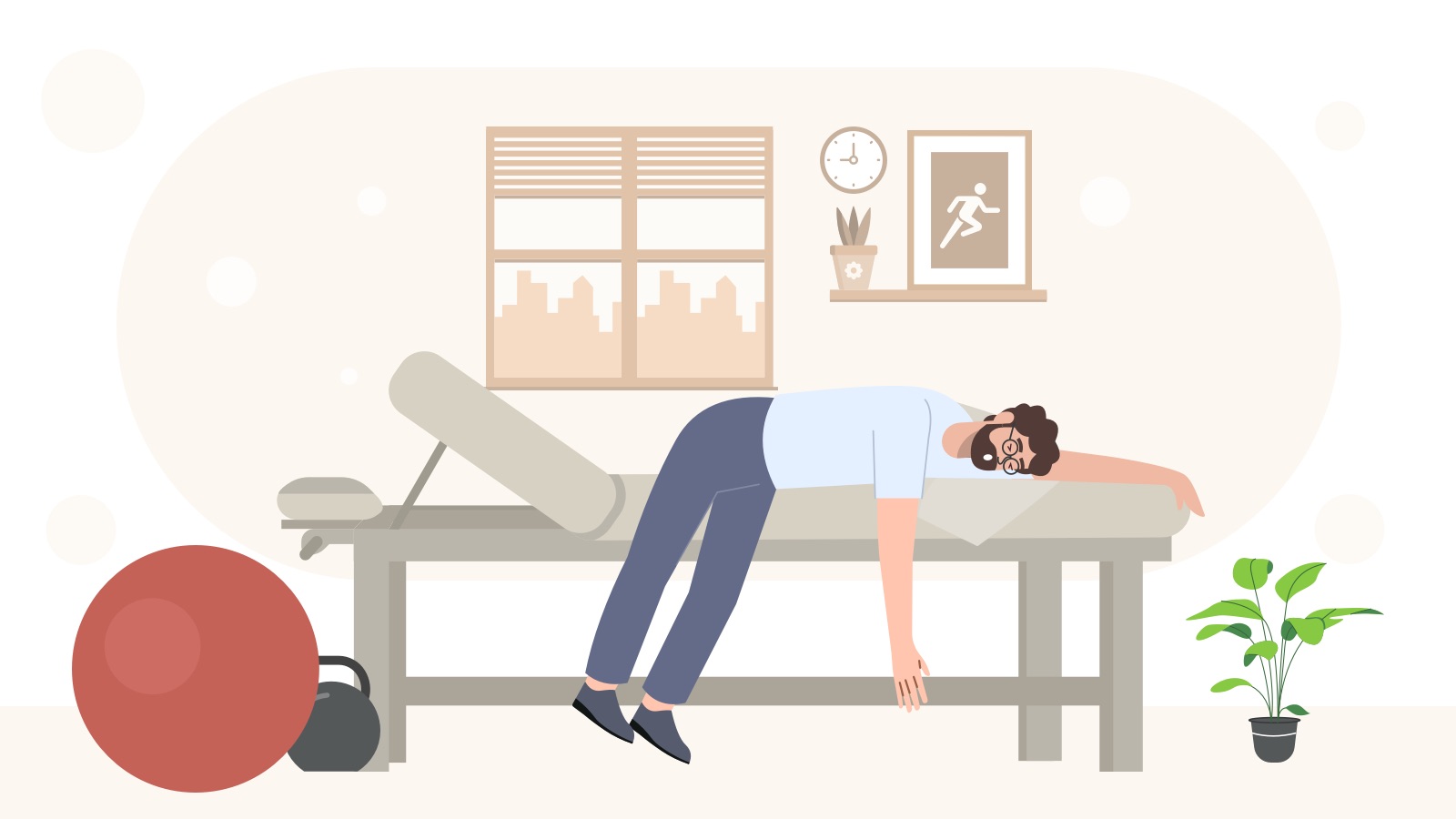Physical Therapy Business Tips
August 19, 2025

With physical therapy burnout on the rise, it’s never been more important to watch out for the signs and protect yourself from losing the passion that brought you into the field of physical therapy in the first place.
Although it’s not a new problem, burnout has been on the rise in recent years due to a number of factors affecting the health and happiness of physical therapists. With more obstacles and fewer perks than ever before, many physical therapists feel forced to leave the field altogether.
But fear not, because we’re going to explain how to recognize physical therapy burnout, what to do about it, and how to make your physical therapy practice a bright light in a dark time. Let’s get started!
Physical therapy burnout is a growing issue that’s influenced by a wide range of factors providers face, including key professional and personal challenges such as long working hours, high patient volumes, excessive clinical documentation, emotional exhaustion, constant manual labor, and poor work-life balance.
It’s no secret in the field of physical therapy that burnout has been on the rise. In fact, a 2021 survey by the American Physical Therapy Association (APTA) revealed that the physical therapy burnout rate has come to a full boil, affecting a stunning 50% of physical therapists surveyed.
With so many PTs struggling to stay inspired, it’s more important than ever to reflect on how you’re feeling as a physical therapist, acknowledge if you’re experiencing burnout, and start taking steps to prevent it.
Let’s take a closer look at a few of the key causes of burnout for physical therapists.

Most healthcare workers are used to working long hours, and in some fields, it’s even considered a badge of honor. However, working long hours when you have to - not when you want to - can quickly add up to physical and mental fatigue that eats away at motivation.
Physical therapists are especially susceptible to working long hours because they often work in clinics that are understaffed, poorly reimbursed by insurance plans, and unable to provide enough paid time off for employees. If you’ve ever taken your first patient at 7 AM and finished your notes at 7PM, then you know this struggle very well.
In days past a physical therapist would spend a full hour with each patient, having ample time to provide great treatment and handle all of their admin tasks without excess stress. Unfortunately, changes in the healthcare industry in recent years have pushed many physical therapists to see two, three, or even four patients in an hour.
Most physical therapists can handle a few 20-patient days, but few can endure month-after-month of seeing 100 patients per week. Unfortunately, this has become the norm for many outpatient clinics trying to serve their communities without going underwater financially.
No day of patient care would be complete without leftover charting, and it’s not uncommon for most physical therapists to spend a few minutes finishing up their notes before going home. However, due to increasing patient load, many PTs are stuck with a stack of virtual paperwork that often keeps them at the clinic for hours, even taking it home with them to work late into the night.
On top of documentation, working with insurance companies has become increasingly challenging and cumbersome in recent years. With fewer visits being approved and more checkpoints in the care journey, most physical therapists are spending several unpaid hours every week just trying to get approval to work with their patients.
Providing physical therapy to patients is not an easy job, and it often comes with a big emotional burden that builds up over time. While patients struggling with complex pain and other chronic conditions can require the most emotional support, just about any patient can become a source of emotional fatigue in the right circumstances. With more patients and less time off, PTs are finding themselves unable to prevent emotional exhaustion in their personal lives.
Emotional exhaustion can feel like not caring about your work as much as you used to, struggling to handle your ownlife challenges, and developing a sense of apathy toward other people.
Although the word “physical” is in the title of a physical therapist, most people forget that PTs are constantly using their bodies to treat patients. This is especially true for those working in hospitals and skilled nursing facilities whooften need to assist patients with mobility, but can be just as true for outpatient therapists providing manual therapy.
If you’re waking up sore, showing up to work tired after the weekend, and feeling stubborn aches and pains during your work day, it’s likely that you’re being overloaded by the physical demands of your caseload.
Many physical therapists take pride in their dedication to their patients, but fewer and fewer are getting the time they need to rest and recover from their busy clinical lives. Work-life imbalance can be caused by all of the challenges above, but often manifests as the blurring of work and home life.
If you’re struggling with bringing charting home and “I’ll take a day off next month” has become your mantra, you might already be experiencing work-life imbalance that can quickly turn into physical therapy burnout.
With the physical therapy burnout rate continuing to rise, physical therapists should take measures to prevent it before it happens. Some helpful strategies include setting clear boundaries, managing time efficiently, streamlining documentation, automating scheduling, offering telehealth, prioritizing self-care, hiring more staff, and growing professionally.
With so many potential causes of physical therapy burnout, knowing how to protect yourself from each one is essential. Let’s look at some of the best things you can do to keep yourself engaged in your PT career year-after-year.
.jpg)
Setting boundaries may sound simple, but it’s easy to forget how important it can be for physical therapists. Focus on the areas that are causing you the most stress and look for opportunities to make changes. For example, if you’re taking documentation home with you every night, put a note at your desk reminding you that you will not take notes home with you more than twice per week.
Boundaries can also be related to the hours and days you work, often causing unhealthy changes in work-life balance. If you’re the type of physical therapist to regularly work weekends, but are also starting to feel burnout, put a block on your personal or work calendar for all but one weekend per month, helping you remember your boundaries when the offer comes around.
One of the best ways to nip physical therapy burnout in the bud is to look for ways to manage your time more effectively during your normal workday. For example, if you often find yourself with unfinished documentation at the end of your day, start putting admin blocks on your schedule to help yourself catch up (and take a deep breath) and make managing time off more automatic.
If it’s normal for you to fall off your schedule by losing track of time or feeling obligated to work with patients late, experiment with setting a timer on your watch and explaining to your patients that you need to respect your schedule to protect the appointments of other patients.
Because documentation is such a big part of any physical therapist’s day, saving ten minutes per day can add up to hours every month. Using tools like online intake forms, intuitive SOAP note templates, and simple billing forms can bring down your total charting time during your workday and may even save you from taking notes home with you. For more helpful advice, check out our tips for writing physical therapy soap notes.
ClinicSense is an all-in-one physical therapy practice management software that empowers practice owners and staff physical therapists to get their documentation done on time. With online intake forms, customizable SOAP note templates, and lightweight billing, you can make your documentation less of a hassle and protect yourself from physical therapy burnout.
Curious how you can level up your documentation? Be sure to review some of our best physical therapy documentation tips.
Managing patient appointments can be a time-intensive admin task, and more patients means more schedules to manage. Using a tool to automate scheduling and automate appointment reminders can pay dividends for your workload, giving you more time to relax and recharge.
In addition to streamlined documentation features, ClinicSense also gives physical therapists the power to quickly schedule and modify patient appointments. Backed up by automated appointment reminders, ClinicSense users are doing less worrying about their schedule and more self-care between appointments.
Not all recent changes to the healthcare industry have been bad, and some can actually help prevent physical therapy burnout. Virtual physical therapy appointments became popularized during the 2020 COVID pandemic, and it’s here to stay.
Offering both virtual physical therapy and in-office physical therapy can help you manage your caseload by increasing flexibility, adding efficiency, and improving patient access to your practice. When choosing a telehealth platform for your practice, also make sure to choose a physical therapy software that supports virtual physical therapy.
The obvious challenge physical therapists face when spending all of their energy helping other people is that they don’t spend enough energy on themselves. Prioritizing self-care not just on weekends, but also weekdays is essential for staying inspired and preventing physical therapy burnout.
Self-care can look different for everyone, but some of the easiest and most effective options are exercising, spending time outside, socializing with friends and family, and eating a balanced diet. Starting the morning by reminding yourself that you also deserve to be cared for can make a big difference in your outlook and how you prioritize your day.
If you’re beginning to experience physical therapy burnout because your practice is seeing too many patients, it might be the right time to bring on another staff physical therapist. Having more providers on staff not only takes the edge off of a full schedule, but it also creates more flexibility in your practice when providers are feeling unwell or want to take time off, promoting healthy habits and reducing staff turnover.
Because many physical therapists report their burnout being related to a lack of professional growth, intentionally carving out time for your own growth can help you get ahead of the curve and stay motivated. For example, sign up for a continuing education course that you’re interested in and get CEUs for physical therapy, or dive deep into physical therapy specialties that you’re passionate about.
Staying inspired day-after-day can be a major challenge in today’s physical therapy landscape. By being aware of your potential physical therapy burnout early and taking steps to prioritize yourself, you can stay in the game and make a difference in the PT profession.
Preventing physical therapy burnout is a constant effort that requires thoughtful use of physical and digital interventions. Choosing physical therapy practice management software with key features like customizable SOAP notes, online scheduling, and simplified billing is important because it positions physical therapists to provide better care in less time.
Physical therapy practice owners looking to optimize their operations and prevent burnout of their staff (and themselves) need to be selective about their physical therapy practice management software. Choose the right PT EMR and documentation software and you’ll be thanking yourself every day while enjoying time away from the clinic. Choose the wrong software and you might be on your way to burnout faster than you think!
ClinicSense is a powerful and intuitive physical therapy software that comes out-of-the-box with burnout-preventing features like seamless appointment scheduling, automated appointment reminders and patient outreach, and simplified invoice generation.
At the heart of what makes ClinicSense the preferred physical therapy software for so many practice owners is its state-of-the-art documentation tools, making physical therapy SOAP notes a breeze for PTs with busy schedules. On top of that, physical therapists can get free physical therapy documentation templates to help them get ahead of their work and stay inspired to provide excellent care.
Whether you’re already feeling physical therapy burnout or just interested in future-proofing your career, taking advantage of the tools available to you, like industry-leading physical therapy practice management software, can help you stay on-track for the long haul.


.avif)
.avif)
.avif)









For 14 days